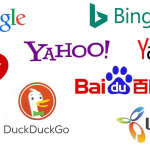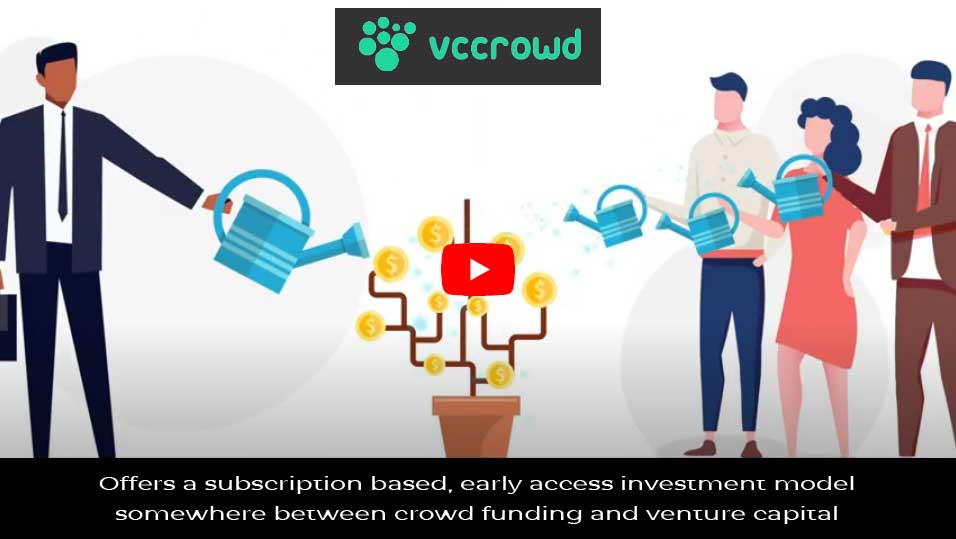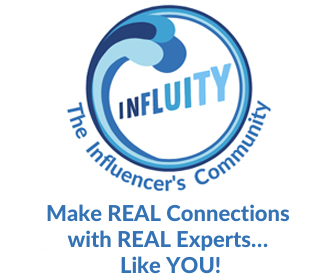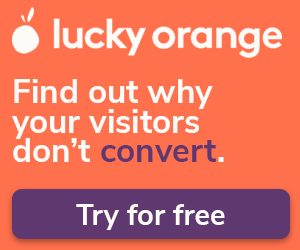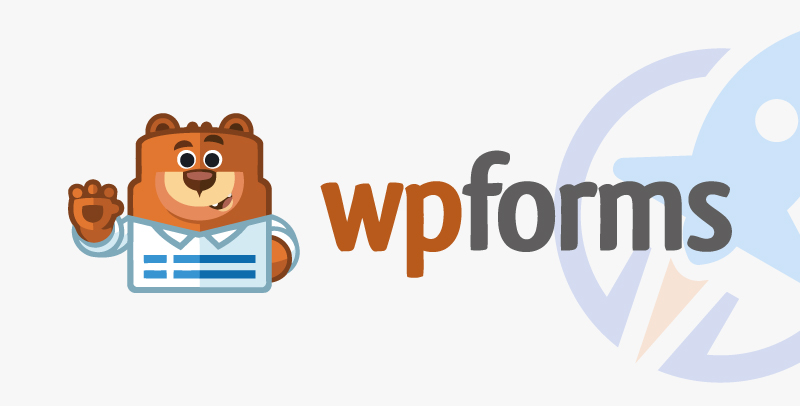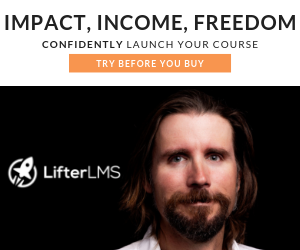Traditional marketing playbooks are falling short in the SaaS world, but while many marketers privately acknowledge the ineffectiveness of these playbooks, they are still hesitant to discuss it publicly.
Far too often, too much time is spent implementing copy-and-paste versions of existing marketing playbooks, and not enough time is spent on creating new playbooks that are unique to your company and fueled by research that makes you stand out.
- Analytics and attribution are becoming harder and harder.
- It’s easy to look at competition and do the same thing they’ve done, but then you’re always playing catchup.
- Large companies are eating up the majority of the consideration data set, with high intent, in traditional channels.
- The landscape is getting more and more crowded, and great marketing is really hard and takes time.
Plus, while many marketing leaders have the career stability and influencer clout to try risky things without risking their jobs, the people at the bottom who are actually doing the work don’t have that advantage — and they’re the ones who are often held responsible for metrics and success numbers.
So how do marketers break out of the cycle of always sticking to the safest playbooks when they aren’t working as well as they used to?
In this episode of Growth Stage, Fred Linfjärd interviews Podia Senior Growth Marketer Marc ✌️ Thomas about:
- Why not enough marketers are talking about the failure of the same old playbooks.
- Why it’s become so hard to market (and measure marketing efforts) for software and SaaS products.
- Marc’s RINse and Repeat framework that helps marketers Relate to customers, Ideate novel and innovative marketing strategies, and Narrate the impact of their marketing to leadership.
- Examples of innovative, unique marketing strategies that Marc and his team have had success with.
- And so much more!
Are you looking for a merchant of record that will help you grow your subscription software business? FastSpring provides an all-in-one payment platform for SaaS, software, video game, and other digital goods businesses, including software management, VAT and sales tax management, global payments, and consumer support. Set up a demo or try it out for yourself.
Jump to video. | Jump to transcript.
Podcast Full Interview: Audio
Listen online or find it on more podcast services.
Podcast Full Interview: Video
Transcript
Fred Linfjärd (00:04)
Hello everyone and welcome to Growth Stage, a podcast by FastSpring where we discuss how SaaS and digital product companies grow revenue, build meaningful products and increase the value of their business. As you can see and hear, I am not David Vogelpohl, CMO of FastSpring. My name is Fred Linfjärd and I normally work as the Director of Growth at Planday, B2B SaaS platform. And I also work as an advisor
to FastSpring, where I use my product expertise and experience to support them being more customer centric in their product and strategy. So welcome. And this episode tackles the reality that traditional marketing playbooks are falling short in the SaaS world. We are going to talk about a unique framework called Rinse and Repeat that tries to solve this issue. And it’s created by our guest, Marc Thomas, who is the growth lead over at Podia.
Marc also runs a successful marketing newsletter and blog under the name Positive Human. And what I really like is that he’s founded a new music genre that I called Marketing Electro that you can find on LinkedIn. So welcome Marc to the podcast. I’m super excited to talk about that. Anything you would like to add?
Marc Thomas (01:23)
No, that was, that was great. Some people call it growth core actually, uh, as a music genre, which I think is pretty sweet.
Fred Linfjärd (01:31)
see that. Yeah, it is definitely core. You’re absolutely right. Cool. Well, we’re excited to have you and talk to you. This issue with marketing playbooks being regurgitated and you see them over and over again, it’s not being talked about nearly enough. It’s a big problem for companies, but I think maybe more importantly, it’s a problem for marketers being set up
Marc Thomas (01:34)
You
Fred Linfjärd (02:00)
to fail and not being able to do the best work they could be doing. So tell us a little bit about, you know, how you’ve been spending so much time and thoughts into this and why is this? Why is this happening?
Marc Thomas (02:15)
Well, firstly, let me just say, uh, you say it’s not being talked about very much. Actually. Um, that’s, that’s absolutely true. And I had the suspicion that maybe people were not wanting to talk about it. So I went off and I did some research. Uh, it wasn’t like a massive amount of research, but I, I did a survey and I did a bunch of, uh, calls with marketing leaders. And what I found is almost everybody is acknowledging this privately.
Uh, but because a lot of people are still wondering how to react and how to adapt to that. And they’re worried about getting it wrong. They’re scared about getting it wrong. They’re not saying it publicly. Now, marketing leaders are in a position where they can do that, right? They’ve got a career track record. They have, uh, roles that aren’t necessarily just related to the metrics that they deliver and manage.
Fred Linfjärd (03:04)
Mm-hmm.
Marc Thomas (03:12)
uh, that their success and their performance is actually measured on, on all sorts of different things. But then there’s this whole industry of people in the actual marketing roles and those people are struggling because the marketing leaders, you know, for very good reasons, won’t actually talk about this publicly. And yet they’re still expecting the same playbooks to be run. Okay. So.
That’s pretty crushing in some ways, because a lot of people are going to miss out on maybe some of the career progression they might otherwise have had if they were simply allowed to acknowledge publicly, Hey, we’re like, I don’t know, our SEO approach is broken or our paid media is, you know, maybe 90% waste. Um, so I think that’s like a really important point is like a lot of people are acknowledging this privately and things are about to change, but yet
a lot of people don’t know how to approach that. And that’s really why I sort of came up with this concept of rinse and repeat. It’s really a response to like, like, nobody knows. But how do you approach this in a way that’s sort of measured and cuts the risk that you’re taking by saying we’re not going to produce maybe new content on our blog, because we’ve always done that. But it’s no longer working that kind of thing.
Fred Linfjärd (04:33)
Got it. Yeah, I think it’s a really interesting topic and it’s really interesting that you’ve kind of dove into this on outside your work and kind of created the positive human, which is kind of like just really diving into this from all different angles. And I’ve thought about this because as you say, I think it’s acknowledged.
by most of the practitioners and everything. But still, it’s hard to actually get to a point where you’re driving this change. And I’m starting to think, is it like a hard thing to explain to those that you might be reporting to that, hey, we want to do something new. And you’re kind of like, well, why not do what…
They do, it seems to work for them. We should be doing that. So they never kind of get the time because marketing takes time, right? And you won’t see the results in two weeks or three weeks or, I mean, you’ll see next quarter if it’s working. It’s just hard to have to power through that change. What do you think about that?
Marc Thomas (05:52)
Yeah, no, I do definitely agree. Um, there, there’s a lot of, there’s a lot of reasons why it’s why this, this is, this is a hard time to be in marketing and a software product in particular. Um, couple of, couple of major changes that have happened over the last couple of years, which I think are really worthwhile looking at. Um, so the, the, the first, the first kind of big thing that really happened was that GDPR happened, right? Uh,
Like GDPR was the first in a series of dominoes that have really affected the marketing industry. Now as a, as a citizen, I very much value GDPR as a marketer. It made my job a lot harder. Um, and privacy legislation basically started being able to, uh, started kind of having an impact on the ability of companies to track users without permission.
Right. And getting permission is, you know, is, is fine, but, um, but it’s a step that not everyone wants to take. Um, then the iOS 16 update for Apple, which basically took away the kind of the ad tracking, um, uh, ability, uh, that massively impacted a lot of the channels. So for example, like meta ads was hugely impacted by that. Um, and that’s a big old challenge. And then.
Recently AI generated content took hold of the SERP, right? The search engine results in the comment section everywhere, all the time, all at once, right? Then Google, they decided to sunset universal analytics. Uh, and suddenly a lot of marketers were actually left without meaningful, easy data to base decisions on. And that brings us like to now where, uh, where we were being asked to continue.
rightly so we’re being asked to continue proving the impact of our marketing, but we don’t actually have the ability to do that because privacy legislation’s cut out a bunch of the ability to track it. And Google analytics really put the nail in the coffin there, uh, by dying. Right. So, um, and then like just one more thing here is that there’s also this big kind of market swell, um, which is, which is caused by large companies dominating.
Fred Linfjärd (08:00)
Yeah.
Marc Thomas (08:14)
marketing channels in topics that are adjacent to or even far away from the original topic of their product. Right? So ClickUp is a good example of this and I don’t blame them for doing this. I think it’s wonderful that they’ve been able to, but like ClickUp have been able to go, I’m a productivity tool, right? So I’m a to -do list app, first of all. And then they added additional features.
And as they did features, they, uh, they also added marketing collateral around those features. And so while they start off in a very basic thing, like let’s say take search as an example, maybe originally they’re doing, um, they’re doing a thing where it’s like, uh, you know, how to, how to create a to -do list. I’m pulling these examples out of the air. So I don’t know if this is real, but like how to create a to -do list, very sort of problem -based content. And then suddenly they add in team collaboration.
And then they add in AI and then they add in project management. And so, and so now they’re in this big old thing of like, they’ve got a huge search footprint. And then you add to that, the fact that over time, because they, they start to eat up other people’s markets and they need to go to new areas and they need to attract new top of funnel, uh, signups. They end up doing like.
very much top of funnel content. So it’s like, maybe it starts off as, you know, how to be more productive. And then suddenly they’ve got how to manage mental health problems as a, I don’t know, a vet or something like that. You know, they’ve got all of this content. I literally have no idea whether they’ve got that content, but what I’m saying, and the reason I’m saying this is large software companies are dominating and eating up the potential traffic and eyeballs.
Fred Linfjärd (09:49)
Hehehe.
Marc Thomas (10:05)
from the smaller companies and even the mid -sized companies. And it’s becoming harder and harder to get in front of people in a way that you can, you can sort of meaningfully drive growth with the channels that you’re already using and the playbooks you’re already using. And that’s why this is really happening. It’s not because people buy differently, people buy in the same way, right? Everyone wants…
Fred Linfjärd (10:30)
Yeah.
Marc Thomas (10:32)
trust, they want social proof, they want an understanding of their problem. They’re not buying differently. So that’s a, that’s a lie that marketers tell, or certainly a mistruth. The reason it’s becoming hard is because these channels are saturated and the playbooks have decreased in efficacy.
Fred Linfjärd (10:44)
Yeah, the mic.
I totally see that, you know, doing growth myself at Planday, it just costs more and more and you’re not reaching the right people and it’s getting, as you said, you can’t use the cookies and those ways how you could kind of repeat your message over and over. And, you know, I actually think that, you know,
Digital is getting so hard and I’m starting to get some really cool things offline. Like seeing companies in SaaS will actually deliver things through an offline channel to me, which I mean, I had one company dealer where our office manager came with the handwritten letter and put it on my desk and I just read it and it’s basically just mentioned my LinkedIn.
discussions in comments and I could see it’s been automated and I’m like, wow, okay. Yeah, they, they just punch, they punch through because I’ve never like answer if I get this SDRs outreach or whatnot, if it’s not relevant. So yeah, this is super interesting and, and, and, and I would really like to talk about the rinse and repeat framework. So, so, so it’s really, as I understand it, guiding marketers to kind of craft their own unique way, right?
Marc Thomas (11:57)
Sure.
Right.
Fred Linfjärd (12:15)
Could you walk us through kind of the key components of the framework and how it helps deal with this uncertainty in marketing and how it maybe relates and helps change the way how we should approach customers research and so on.
Marc Thomas (12:29)
Yeah, sure. For sure. Well, let’s start with the kind of a walkthrough of what the, uh, the actual title is there because rinse and repeat is a sort of an acronym. Um, uh, so RIN is really the acronym here. Um, and, and repeat is just a nice, easy way to remember this. Um, right. So R stands for relate. So at the first step of every campaign and, you know, cycle of thinking about what we’re going to produce, uh, in terms of marketing.
and how we’re going to produce it. That should be relating to customers. Now, a lot of people say talk to customers, right? But this is an ongoing and broad activity. Relations are built on kind of understanding customers over a long period of time and building up this kind of market understanding as well. And so the key job in any, in any process is to relate to.
relate to a customer. So that’s R. Then I is, is ideate. So based on the insights that you get from relating to customers, you can come up with unique and novel ways to market to customers. So new ideas or innovations on old ideas. And those are based on the insights, right? So it’s not like,
You’re not saying our customers hang out on, I don’t know some private forum because that’s great knowledge, but you can go and do the same stuff there without that. You’re saying, okay, maybe they hang out on this forum, but they also have this specific problem that they go there to talk about, or when they go there, they’re feeling this way or something like that. That is what ideate is, is you’re taking the insight and turning it into an idea. And then narrate is the letter N in our.
Um, in our acronym here. So no rate is about, uh, acknowledging that Google analytics is gone. Uh, single channel marketing, um, attribution is no longer really that effective or meaningful because especially in B2B people do buy over a long period of time and across multiple channels and maybe across multiple people in the organization. So no rate is about going, look, there are various ways that people.
Fred Linfjärd (14:45)
Right.
Marc Thomas (14:50)
we can attribute the impact of our marketing because you have to attribute the marketing impact in order to actually get the investment.
But what we’re saying is it’s no longer, look, look at this chart, look at this report. It’s like, look at this report and then look at these insights from customers who said that they bought in this way because of this. And then look at, you know, the social engagement and then look at the, and basically building a narrative that is convincing and coherent to leadership in your company on the basis of what you’ve done. So that’s RIN.
And then finally, we’ve got repeat, which is just simply, you’re going to have to keep on doing this over and over again until something massive changes in the marketing industry. And that’s rinse and repeat as a kind of a summary.
Fred Linfjärd (15:40)
I think it captures all these key components. And I think especially, you know, when it comes to the insight part and the narrative, it feels that many times it’s where you spend the least amount of time to really kind of really, really understand in a granular way. It feels like it’s very easy to use, you know,
jump in on the bottom funnel stuff, right? You know, where everything is kind of the same. Like take someone searching for, you know, your problem plus platform. Okay, you know that they show intent, so you kind of know what you’re going to do. But it feels like it’s failing a lot is the top funnel or the higher up stuff. So kind of this creating of demand. And that’s also where…
It’s harder to measure, right? So it, at least for me, I felt that it’s become easier to kind of just do more of the stuff where you can just prove marketing in that easy way. And now we have all these attribution platforms trying to solve this, but you know, it’s not, you know, a hundred percent, right? I mean, like, every journey is different, right? So it’s hard to, it’s hard to put the, like,
to put the label on how we’re going to do it. And that’s why, at least for me, it feels like, well, if we used to focus on doing what we’re doing and because we’ve done the insight and we have a good feeling that this here is going to work and resonate, why do we always have to figure out the tracking and spend like, you know, equal amount of time on trying to use…
Marc Thomas (17:28)
Hmm.
Fred Linfjärd (17:35)
find how it’s working. You know, it’s kind of isn’t that the whole correlation or causation? I don’t know. Do you know what I’m trying to get at here?
Marc Thomas (17:41)
Yeah, look, it’s not straightforward. Uh, and, and kind of the whole point of this, this framework is like marketing is no longer a straightforward or in some ways marketing is reverting to a period before performance marketing, uh, is really the kind of acknowledgement performance marketing seems to have been a fairly brief, uh, ability like 10 years, probably maybe 15. And now we are reverting to a pre -performance.
period, but we still need to prove our performance somehow. And the challenge is how do you do that? Fred, do you reckon it might be helpful here if we talk about an actual case study of how to apply this?
Fred Linfjärd (18:22)
Yes, I would love to hear something tangible like that, please.
Marc Thomas (18:27)
Yeah. All right. Well, look, I can share an example from Podia from how we applied some of this thinking to our work. So let’s start off at the top. We’ll start off with Relay. So just some context here. Podia is a product, a platform really, for anyone who wants to start an online digital business, usually around…
selling some kind of digital product, like a course or download or webinar or coaching. But we also added email marketing and a website builder to that. So it’s very kind of broad product now. And one of the goals that we have is to get in front of more people, right? So kind of top of top of funnel brand awareness sort of stuff, people who we might never have reached before. And so we started doing a little bit of research. So this is relate, um, about what
people, what kind of problems people face, what sort of things they do in their business. And in fact, we, we always have research ongoing at Podia. It’s not like a one time activity. It’s topical. It’s, it’s related to features. It’s related to problems, all sorts of stuff. So what we did was we, we did some, we did a bunch of customer interviews and, and, and what, uh,
Where we, where we came up with, we discovered basically that when we, when we analyze like what people do with the product, what people say, um, support tickets, community posts and things, uh, we discovered that there is an opportunity for Podium to do more sponsorship. And we discovered also that in our customer base, uh, there are people.
who love Podia and also have sizable audiences related to the topic that they’ve been successful in building a business around. And so we went off and we were like, okay, great. We’ll build a list of people who we could sponsor to talk about Podia in some way. And it’ll get in front of their audience. So there was some relation there. The other insight that we had, and I can show you how we applied this in a second.
Is that a lot of people, two things, firstly, a lot of people don’t want to just hear an ad, which is pretty common. Uh, right. But the second thing is that, um, that a lot of people feel like creating something on the internet. You kind of like run out of juice somewhere along the process, right? You know, all the energy that you’ve got, you hit a wall in your race and you’re like, how do I get over this? Okay. So a couple of things there.
Fred Linfjärd (20:57)
Yep.
Marc Thomas (21:17)
We understood that people like, um, people have in our, in our user base by from people that they like, they, uh, they have sizable audiences themselves and they’ve been successful around, um, around building those audiences. And also this kind of insight about, uh, running out of juice. Now that’s, that’s relation over a long period of time. And then kind of some condensing around that. Um, so what do you do with that?
You You turn it into an idea, right? You need ideas for how to actually take that insight and turn it into something that you can tangibly use to drive new revenue. So we came up with, based on that, this whole concept of sponsoring users to create content. And because we know that they don’t just want to build, they don’t just want to, we don’t want them to read ads. We don’t want to say this episode is sponsored by Podia. We want them to create interesting content that resonates with,
Fred Linfjärd (21:49)
Hehehe.
Marc Thomas (22:16)
our whole brand, which is about creating interesting businesses, right on the internet. Um, and so, uh, we, we basically said to the people who we reached out to from our own user base, we want you to pitch us a concept and tell us how, tell us what it looks like for you about, uh, about how you could create something that is interesting to your audience as a standalone piece of content.
And also promotes Podia in some way. So we had all sorts of people. It was amazing. This, this campaign is one of my favorite campaigns I’ve ever worked on actually. Um, some examples. So we had, uh, we had somebody create, you know, the game horse in basketball or skate and in skateboarding where you do a trick. And then if the person you’re playing with can’t do the trick, they get the letter S or, you know,
Fred Linfjärd (23:06)
Yeah.
Yeah.
Marc Thomas (23:13)
We had a BMX instructor who has an audience on Tik TOK, uh, do the same thing for BMX, but with the, with the word podia and he, um, so we helped him come up with that concept and he absolutely ran with it and it looked cool. He did a whole little series on, on this and, and what it was, was he was doing the tricks, which is interesting to his audience. Even if you’ve got the sound off, the word podia is displayed on the screen at the whole time, because it’s literally a scoreboard.
Fred Linfjärd (23:41)
Yeah.
Marc Thomas (23:41)
And, uh, and also, uh, while the audio itself was him talking about Podia and how he uses it to build his business, which is pretty sweet as a sponsorship. Um, another example, we had somebody who teaches cake, uh, cake decorating on Instagram and she created a purple layer cake, which is purple is the brand color of Podia is very distinctive brand.
And, um, uh, and she, she created this beautiful looking purple cake. It was sort of like ASMR for your eyeballs. Uh, right. Like she’s doing this, she’s doing the icing and the layers are all different purples and stuff like that. And the whole time she’s talking about Podia. And then finally, and this is the one that like, for me literally puts the icing on the cake. We had this, uh, user in our user base, um, the plant based.
whole food cooking show. I might have got that the wrong way around the whole food plant -based cooking show. And it is a sizable cooking show on YouTube. Um, and we started talking to them and they have a couple of different sponsorships, uh, because they’ve already monetized their audience in some way. And, and, uh, they, the classic one is an ad read. So their audience is all people who want to make plant -based cooking, right? The classic thing for them is an ad read, but we were like, look,
do let’s do something a bit more sort of creative because you’re creative people. And they also have this ads format that they have or monetization format where they’ll create a recipe with your ingredient. Um, now most of their sponsors are ingredient companies or food companies. So we don’t have an ingredient, but what we said was, look, we’ve got this, we’ve got this understanding from our user research that a lot of people who, um, who hit kind of hit this barrier
of, uh, of kind of creating something and playing something out, they run out of creative juice. Um, so why don’t we, uh, why don’t you really make a whole episode about this purple juice drink that you’re going to create, which is sort of plant based, uh, made to, um, made to kind of help you, help you feel like a little bit more energized or, you know, the ingredients have properties around
creativity or something like that. I don’t know, really. And anyway, they ran with that and they came up with literally creative juice, which is a purple smoothie drink that they made on the show while talking about Podia. So their audience loved it. We got like a really great kind of sponsored piece of content. That content is going to stay there forever. It’s on their YouTube channel. It’s not like they just
Fred Linfjärd (26:33)
Yeah.
Marc Thomas (26:34)
made a one -off episode. It’s a useful piece of content, regardless of where the Podia is mentioned or not to their audience. And because we want their customers, we want their viewers to create Podia sites. This is a perfect thing. And so that was ideate. That’s exactly what this process is like. Relate then ideate. Do you want me to do—
Fred Linfjärd (26:40)
Wow.
Wow, that is really interesting and very, very nicely put out how you actually combined and inserted your brand into their channels in a very kind of way that’s unique to them, that you kind of empowered them to kind of do their things. It’s kind of a…
both getting kind of value out of it and you know, and you guys coming and helping them maybe to do the ideation. I really, really like that. And then of course you get the piece of really unique content that probably you wouldn’t be able to do yourself as you know, with the more traditional playbook. Well, let’s get someone to do a podcast or something like that. I really like that. So how do you like…
What’s the next step from there? Is there anything that needs to be like reported or tracked in order to connect the dots? Or is it kind of like, well, let’s just focus on doing these things, creating and ideating these really unique pieces of content. And then we’ll see how it, like the engagement of it. And then we’d take the next step afterwards and you would get like the support maybe from someone. Like, I mean,
Marc Thomas (28:02)
here.
Fred Linfjärd (28:23)
The support from your managers to actually get the time to spend doing this. How does that work?
Marc Thomas (28:30)
Right. Well, like, um, no, you have to, at my view is you have to be able to prove the impact of your work. Even if that’s not a fully qualitative thing, you have to be able to prove the impact of your spend. Otherwise you’re just creating art, right. Um, which is, which is lovely, but it’s not the job of marketing at the end of the day. Um, so let’s like take this creative juice campaign, which I think is a good one. So there’s no.
Fred Linfjärd (28:47)
Hmm.
Marc Thomas (28:59)
no analytics tool in the world that can successfully measure the direct impact on your revenue of having an influence to create a soft drink for your brand. Like, just not possible. But like at some point, my my manager, Benjamin Elias, he’s the VP of marketing here at Podia, he persuaded the organization as a whole that ideas like this one would be valuable. Now, I don’t know.
Fred Linfjärd (29:08)
No.
Marc Thomas (29:26)
the exact conversation here that he had. So, so I can’t speak to that, but what I can say is from having kind of inputted into this and worked on this project, I, um, I like to think of this as, uh, like almost an, um, a matrix of attribution. In fact, that’s another little framework I created while I was at my last role, uh, at powered by search. So I call it the attribution matrix and it factors in a bunch of different things. So.
the axes, if you can imagine this, the Y axis is qualitative to quantitative. So qualitative and quantitative. And then the X axis is low confidence and high confidence. So all, all attribution fits within one of these segments. No matter what project you’re working on, there is no, there is no signal that doesn’t fit into one of these quadrants.
So high quality, low confidence, qualitative data. I call that supporting points. So you can build that into the narrative of key reports and use that to improve confidence in supporting metrics. Then you’ve got the key narrative, which is qualitative, high confidence data. So you can pin your attribution model on that and you can confirm key reports and supporting metrics. Then you’ve got…
those supporting metrics, which are low confidence and quantitative. Um, so it’s about building a story around that. And then key reports, which are high confidence, quantitative, uh, signals. So just some examples, key narrative, qualitative, high confidence signals. That might be stuff like self -reported attribution on calls, demos, and form fields where you literally just ask people, but sometimes, and some people won’t like this.
Fred Linfjärd (31:15)
Mm -hmm.
Marc Thomas (31:22)
Frankly, your own gut feel because you have that data that maybe is hard to quantify and hard to qualify as your experience tells you, it is still useful. Supporting points might be, so those are qualitative low confidence signals. Those might be things like comments on social posts. So in our case, the creative juice stuff, like the comments on those videos, some of them contained references to Podia.
So was it a success while we, we kind of activated people who might never have thought about podium. Otherwise it’s pretty, that’s, that’s a strong signal. Then key reports, quantitative high confidence signals, stuff like ad platform data that you have a good amount of confidence in that was even with the privacy and tracking regulations. And then finally supporting metrics. Those are the quantitative low confidence signals that could be stuff like engagement with email marketing, right?
Fred Linfjärd (32:10)
Right.
Marc Thomas (32:21)
So, if I think of like how I would spin this, so the narrative is about combining those different segments as appropriate for your campaign. So for example, I personally tend to favor that kind of narrative reporting for harder to attribute channels like sponsorships. So in addition to the key narrative of qualitative high confidence signals, I’d…
also add in key reports like affiliate link tracking or supporting metrics, including like traffic numbers to related landing pages to get a richer picture of what’s working and what’s not. Um, but let’s say you do like the numbers and you think the numbers are the most valuable thing. Um, you should take supporting metrics and supporting points and add those to your key report. So the, the, the kind of the, the reality of, uh, narration is that you,
de-risk your investment before the campaign launches, because you can present a measurement plan that explains all the places that you’ll look at the ROI. That increases leadership confidence, by the way. It’s not a single, a singular thing. You’re telling a rich story. And the second thing is you actually increase the likelihood of making successful marketing decisions once the campaign’s up and running, because you’re not basing your choices, your ad adjustments or your…
You know, adding in new content to the campaign based solely on some of the isolated metric or analytics report, because we know data lies and you lie about data. Like as kind of, uh, you know, rational as you are, your gut tells you different things sometimes. And that means you’re less likely to encounter a scenario where your boss sees the marketing spend as a ratio of leads generated and just tells you to turn it off straight away. So like, that’s how I think about narration really.
Fred Linfjärd (33:50)
Yeah.
I, that’s really, really, that’s a really, really good, uh, advice. And I, and I think it’s also, uh, goes back to, to the part where you, uh, I mean, basically you need to really think about, well, how does success look like and, and, and, uh, and before, and then what you’re advising here is kind of like, well, you know, it’s, maybe it’s not just one metric. It’s a, it’s a mix of low confidence and maybe high confidence. And that together, uh, paints the narrative that.
that you can then communicate internally and actually prove the correlation between, hey, we’re doing this and we’re investing this time here and it’s impacting this and we’re thinking we’re going to see the results in this way. So I really like that. And I know we’re coming almost to the end here, but I really would like to ask you in simple terms, If you are a company that’s kind of heavily
reliant on a traditional playbook, like, well, we have our PPC and you know, we’re doing bottom of funnel. Like what’s the initial step you should take to kind of transition towards more, more like this, more rinse, repeat, and looking at the rinse and repeat framework? I mean, because I mean, you can hardly go from, I run, our business is 80% PPC to doing purple juices on YouTube, right?
Marc Thomas (35:31)
Yeah. And you shouldn’t stop doing that other stuff either if you, if you can show that it is useful, right? If you can build a narrative around the utility of your PPC as it is great. Uh, carry on doing it if it’s genuinely useful to you because it’s working, right? But adding in other things, how would you go about doing that or maybe transitioning some stuff? Well, how I think about this.
Fred Linfjärd (35:40)
Yeah.
Marc Thomas (35:59)
And I think that’s how I think about all marketing is literally go to your customers and start running not just one, but all sorts of different research activities. So go from, uh, quantitative stuff. So a great way to do this is to stay, if you’ve got a software product, which I think is really the kind of target audience here, right? Um, if you’ve got a software product, run an in -app survey about a, uh, about a little pop -up.
Fred Linfjärd (36:10)
Mm.
Marc Thomas (36:28)
we use Iterate HQ at, um, uh, uh, Podia. Run a little survey asking users about something specific and it’s a closed question, right? So those questions great because it’s very easy for people to take right now. I’m running one on Podia because we’re targeting people with, um, uh, email upsells. We want people to start using Podia email more. Um, I’m running one that literally just asks what email marketing platform do you use?
What I’m going to do with that data eventually, I know, is I’m going to segment and tailor my outreach to those users based on what they’ve answered. But also, I might do some further qualitative research based on people who respond to that. So I’ll go back and I’ll say, like, you know, these 400 users or 4 ,000 users or whatever it ends up being said, they use, I don’t know, MailChimp. I want to go off and I want to interview MailChimp users
about why they like MailChimp and why they don’t like MailChimp and why they chose it. And I might go and interview 20 people in a qualitative interview. Then I’ll code that. I’ll turn it back into a survey. Uh, base with the question set is based on these, um, these things. And then by the end of that kind of little, um, you know, narrow to broad to narrow diamond, you know, I’ll have like some really great insights about why our users use MailChimp.
and how we can make them not use MailChimp and use Podia email instead. And then I can use that as like a de-risking for the rest of the stuff that I want to do. Because this is all about, for the time being, acknowledging that people feel like running playbooks that are non-standard is actually risky. And so going to your customers, when you get close to your customers’ fears, it gives you permission to do these things. And
Fred Linfjärd (38:06)
Right.
Marc Thomas (38:26)
get weird, right? And you can go and play in spaces where your customers, where your competitors can’t play in and, and your programs go from “don’t care” to kind of “bought in,” uh, which is pretty sweet. That’s what you want from marketing. So that’s what I’d say. Go to your customers and use it as a de-risking strategy.
Fred Linfjärd (38:31)
Mm.
Wow. Thank you so much, Marc. And just to do a quick sum up here, you know, the Rinson Repeat framework is really a guide and a tangible way to look at how you can transition to doing more unique marketing campaigns and penetrating, you know, the noise to reach your customers in better, more creative ways. So…
And what we talked about today is also the importance of, you know, you don’t just jump in and try to ideate and think about figuring out a new way of doing. You need to kind of do the research part first, right? To get the insight. And that’s also what I take away from this is where you should start. The first initial steps is actually to spend more time on doing this research part.
which then will give you the next piece of the puzzle, which might be ideation or might be another research, right? And then you kind of take it from there and it might turn out to be a campaign. So that’s how I would like to sum it up. So the tracking part, you know, with the different signals that can help.
show success that will help you sell it internally, reduce the fear and then the insight. And all this here is kind of also de-risking and helping drive this change. I don’t know. Did I get it sort of right there?
Marc Thomas (40:30)
That was good to me. Yeah, you got it.
Fred Linfjärd (40:33)
Perfect. Perfect. Well, hey, Marc, thank you so much for sharing today and being part of the Growth Stage podcast. If you guys would like to learn more about what we talked about today and what Marc Thomas is up to, look him up on LinkedIn and I really recommend you guys visit his blog on positivehuman.co. It’s a really good read and a newsletter with a lot of
great tips around this topic. Also check out what did you call it? Not marketing, growth core, the growth core music he puts out on LinkedIn. All right. Thank you so much, Marc.
Marc Thomas (41:11)
Appreciate it.
Fred Linfjärd
And thank you all for tuning in. Bye.
The post Breaking Out of the Copy-Paste Marketing Playbook Cycle appeared first on FastSpring.

